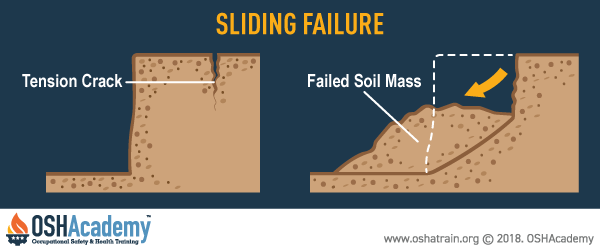Why Soil Fails
Soil failure. Soil failure is defined as the collapse of part or all of an excavation wall.
Safe slope. A safe slope can be defined as the maximum angle of the edge wall or bank of an excavation at which sliding will not occur. The unique mixtures of the different types of soil (sand, clay, silt and rock) necessitate different safe slopes from one excavation site to the next.
Soil Sliding. Soil sliding is the most common factor leading to soil failure. The most common soil failure is typically described as an unexpected settlement, or cave-in, of an excavation.
Complicating Factors
There are other complicating factors that can result in soil failures.
- Layering. During an excavation, visibly different layers of soil may be uncovered. Each of those layers may call for different safe slopes. It is essential to plan your excavation around the most gradual safe slope for the different soil types and layers encountered during the excavation.
- Soil composition. Another complicating factor is that soil composition mixtures may vary significantly from one area of the project to another. During an excavation, as the soil composition changes, the safe slope for trench wall excavation also changes. Thus, across an excavation site, the slope of the bank may need to be different to provide a safe working environment.
Knowledge Check Choose the best answer for the question.
3-1. What is the most common cause leading to soil failure?
You forgot to answer the question!

